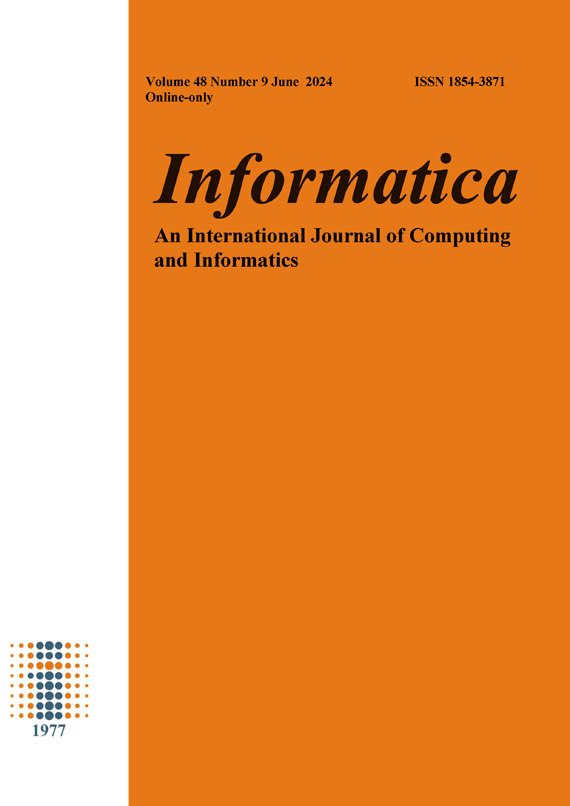River Ship Monitoring Based on Improved Deep-Sort Algorithm
DOI:
https://doi.org/10.31449/inf.v48i9.5886Abstract
As the economy develops rapidly, waterway transportation has gradually become an important part of the logistics industry. Aiming at the low detection and tracking accuracy of ship objects, a model for object detection and tracking of river ships was built. First, the dilated convolution was introduced into the backbone network of YOLOv3. A prediction scale of 104×104 and L2 regularization were introduced to heighten the network’s susceptibility to small objects. A target detecting model using improved YOLOv3 was constructed. Then the improved YOLOv3 was used as the detector for the deep simple online realtime tracking algorithm’s detection part. The D-IoU distance was introduced into the cascaded matching loss to build a ship tracking model based on the improved deep simple online realtime tracking algorithm. These results confirmed that the improved YOLOv3 had a detecting accuracy of 6345, a detecting time of 21.3 seconds, a recall rate of 93.25%, a missing alarm rate of 6.76%, and an average precision of 92.53%. The proposed object detection model performed the best in terms of detecting accuracy, missing and false alarm rates, and average precision indicators, with values of 87.48%, 5.14%, 12.51%, and 94.35%, respectively. The proposed ship tracking model had the highest recall rate of 64.7% and a multi-target tracking accuracy of 61.8%. This study confirms that the proposed object detection and tracking models have good performance and contribute to the intelligent development of the waterway transportation industry.Downloads
Published
Issue
Section
License
I assign to Informatica, An International Journal of Computing and Informatics ("Journal") the copyright in the manuscript identified above and any additional material (figures, tables, illustrations, software or other information intended for publication) submitted as part of or as a supplement to the manuscript ("Paper") in all forms and media throughout the world, in all languages, for the full term of copyright, effective when and if the article is accepted for publication. This transfer includes the right to reproduce and/or to distribute the Paper to other journals or digital libraries in electronic and online forms and systems.
I understand that I retain the rights to use the pre-prints, off-prints, accepted manuscript and published journal Paper for personal use, scholarly purposes and internal institutional use.
In certain cases, I can ask for retaining the publishing rights of the Paper. The Journal can permit or deny the request for publishing rights, to which I fully agree.
I declare that the submitted Paper is original, has been written by the stated authors and has not been published elsewhere nor is currently being considered for publication by any other journal and will not be submitted for such review while under review by this Journal. The Paper contains no material that violates proprietary rights of any other person or entity. I have obtained written permission from copyright owners for any excerpts from copyrighted works that are included and have credited the sources in my article. I have informed the co-author(s) of the terms of this publishing agreement.
Copyright © Slovenian Society Informatika








